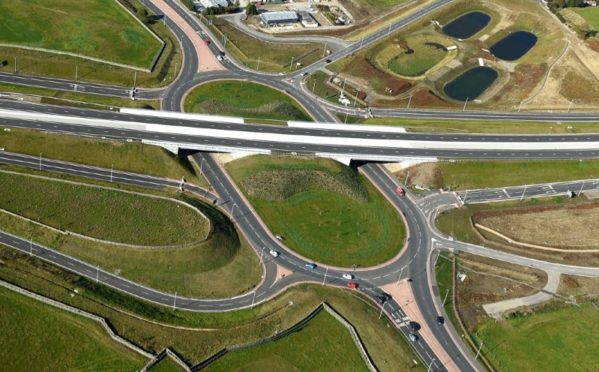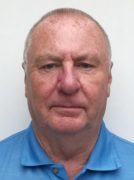Searching the news for anything not related to the forthcoming General Election, my attention was caught by the announcement that Aberdeen City Council has awarded a £475,000 contract for new signs relating to the city bypass, which has now been fully open for almost a year.
The announcement was hardly earth-shattering, but it did trigger a thought in me about the number of accidents which appear to have happened, not on the bypass itself (although there have been several), but on the exits from it to the existing road network.
Living on the north side of Aberdeen and travelling fairly frequently to visit family and friends south of the city, the bypass has been a major boon for me, and it has undoubtedly removed a lot of traffic from the city’s congested streets.
A typical journey south would see me join the bypass at the Kingsford junction, on the main A944 dual carriageway between Kingswells and Westhill, and it is staggering the number of accidents which have taken place there. Hardly a day goes by without police warning of another bump and while, thankfully, virtually all of them seem to be fairly minor, with few injuries, it defies logic that one roundabout could be the source of so much mayhem.
Whenever an accident is reported, the social network channels go into overdrive, with opinions fairly evenly split between those who blame the road layout and those who blame the drivers. One recurring theme is that there is no such thing as dangerous roads and, while there is a degree of truth in that, road planners do have a duty to bear in mind that there are some pretty poor drivers in our midst and to make using junctions as simple as possible.
In this respect, they have failed with the Kingsford roundabout, because virtually every entry and exit presents a challenge for those who are not at the top of their game. Most of these potential pitfalls only really come into play at rush hour and stem from the fact that there are two lanes of traffic heading in each direction between Kingswells and Westhill and the sheer size of the roundabout itself means that drivers can navigate it without reducing their speed. This, in turn, creates serious challenges for motorists leaving the bypass from the north and heading towards Westhill and for those leaving from the south and heading to Kingswells. Waiting for a suitable gap to cross the fast-flowing two lanes of heavy traffic can lead to frustration, which manifests itself in impatient motorists either adopting the “who dares wins” approach or using the wrong lane to avoid the queues. Hence the number of accidents.
If the problem is bad now, it is scary to imagine what will happen when the new Aberdeen football stadium is open and Rangers or Celtic come to town. The prospect of dozens of coaches trying to merge into the already busy traffic just doesn’t bear thinking about.
Many suggestions have been put forward for dealing with the safety issues, but, in my opinion, the only one which makes sense is installing part-time traffic lights, a system which works fairly well at the Kingswells roundabout just a mile away. Past experience shows that attempting to tackle the problem through better sign-posting will not work because there are a considerable number of poor and impatient drivers who will simply ignore the signs and do whatever it takes to get them to work or home in the shortest possible time. Much as it grieves me to say it, changing driver behaviour is not going to happen, and only a system which forces compliance with the Highway Code will solve this issue.
Yes, it was really that bad
Still stoically body-swerving the election, I was both fascinated and appalled by the interview Prince Andrew gave to the BBC’s Newsnight programme about his links to the disgraced businessman Jeffrey Epstein.
This was always going to be a high-risk strategy, partly because any links to Epstein and the Prince were going to be embarrassing for the Royal Family, but also because Andrew is, how shall I say, not the sharpest of the Queen’s offspring. As it turned out, the interview was excruciatingly cringe-making and, far from resolving the concerns about what he knew, what he did and with whom, it created far more questions. What I cannot understand is why this interview was allowed to take place. The Royal Family has access to the very best experts in news and reputation management, something forced upon the Palace by the public relations disaster following the death of Princess Diana. And yet nobody seems to have realised it was a train wreck waiting to happen – or as one observer put it, “a plane crashing into an oil tanker, causing a tsunami, triggering a nuclear explosion”. Yes, it was really that bad.
Emily Maitlis is a formidable interviewer and she was certainly more than a match for Prince Andrew. Her questions were incisive and framed in such a way that he was left with absolutely no wriggle-room whatsoever, with disastrous consequences. Each answer stretched incredulity further. Perhaps the only insightful observation he made during the whole interview was that he had “let the side down”. He can say that again.
Derek Tucker is a former editor of the Press and Journal

